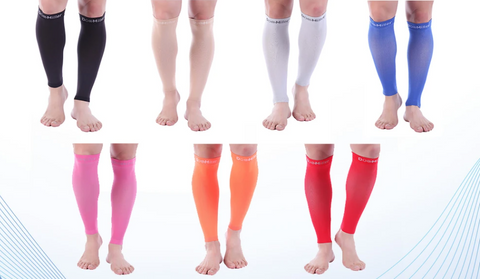Find Out Best Compression Socks for Nurses
Long shifts, constant walking, and hours of standing make leg fatigue a daily struggle for many healthcare workers. That’s why choosing the best compression socks for nurses is more than a comfort upgrade, it’s essential for better circulation, less swelling, and all-day performance. In this guide, you’ll find clear answers, expert-backed recommendations, and easy comparisons to help you pick the right pair.
What Are the Best Compression Socks for Nurses?
The best compression socks for nurses are those that support circulation, reduce swelling, and remain comfortable throughout long shifts without slipping, digging, or feeling too tight.
Key features nurses should look for:
-
Graduated compression levels for proper blood flow
-
Breathable, moisture-wicking fabrics to keep feet dry
-
Arch and calf support to prevent soreness
-
Durable construction that lasts through 12+ hour shifts
-
Accurate sizing and stretch for a secure, comfortable fit
Why Do Nurses Need Compression Socks?
The benefits of compression socks for nurses go far beyond comfort. They help keep your legs healthy during demanding shifts.
Key benefits include:
-
Reduced swelling in the feet and calves
-
Improved circulation
-
Less muscle fatigue during 10–12 hour shifts
-
Support for varicose veins and aching legs
-
Prevention of blood pooling after long periods of standing
-
Increased energy levels throughout the day
Many nurses notice immediate relief after switching to graduated compression socks—especially on back-to-back shifts.
How Do Compression Levels Affect Comfort and Performance for Nurses?
Compression socks come in different pressure ranges (measured in mmHg), and choosing the right level matters.
Common Compression Ranges Explained
-
15–20 mmHg:
Best for everyday nursing shifts. Light support, reduces swelling, great for beginners. -
20–30 mmHg:
Ideal for nurses who walk or stand for 12+ hours. Provides firm support, reduces moderate swelling, and helps with varicose veins. -
30–40 mmHg:
Medical-level compression used only by those with specific vein conditions (doctor-recommended).
Which Compression Level Is Best for Nurses?
For most nurses, 15–20 mmHg or 20–30 mmHg delivers the perfect balance of comfort and support.
When Stronger Compression Is Recommended
-
Severe swelling
-
Chronic venous insufficiency
-
Diagnosed varicose veins
-
Post-surgery recovery
(Always consult a doctor before using stronger levels.)
Choosing the Right Size and Fit for Compression Socks
Getting the perfect fit is just as important as choosing the right compression level.
How to Measure Properly
-
Ankle circumference: Measure at the narrowest part
-
Calf circumference: Measure at the widest part
-
Calf height: From floor to bend of knee
How to Know if They Fit Right
A good fit feels like:
-
Snug but not painful
-
No slipping or rolling down
-
Even pressure throughout the calves and ankles
Too tight if:
-
You see deep marks or redness
-
Your toes feel numb
-
It becomes painful to walk
Too loose if:
-
Socks sag or wrinkle
-
No noticeable support
-
Fabric bunches at the ankles
Common Fit Issues & Fixes
-
Rolling down at the top: Choose a wider cuff or correct size
-
Heel slipping inside the shoe: Select a sock with reinforced heel pockets
-
Calf tightness: Try wide-calf options
-
Length too short: Opt for tall or long sizing
Get Nurse-Approved Compression Socks at Doc Miller Sports

If you're ready to experience the difference the best compression socks for nurses can make, explore the nurse-approved selections at Doc Miller Sports. Their compression socks offer premium comfort, medical-grade support, and durability made specifically for long, demanding healthcare shifts, perfect for both male and female nurses.
Disclaimer: This article should not be construed as medical advice. Please contact a licensed physician for a proper diagnosis of your specific case.

